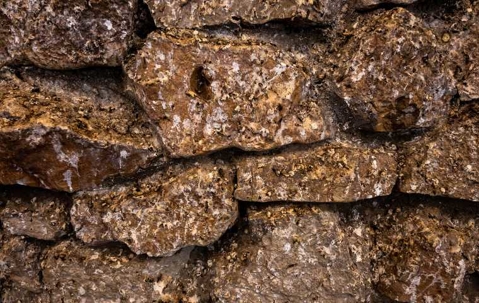Bat droppings, also known as guano, can vary in appearance depending on the type of bats and their diet. However, there are some general characteristics that can help you identify them. Bat droppings typically look like small, elongated pellets or granules. Here's a more comprehensive description:
- Appearance: Bat droppings are usually cylindrical or pellet-shaped, similar in size and shape to grains of rice. They can range in length from about 1/8 inch to 1/2 inch (3-12 mm). Fresh guano often has a slightly shiny or wet appearance due to its moisture content.
- Color: The color of bat droppings can vary, but they are often dark brown or black. However, their color can change over time as they dry out and age, turning lighter in shade.
- Texture: Bat droppings are usually dry and crumbly when touched. They can disintegrate into a fine powder if crushed.
- Odor: Bat droppings may have a strong, ammonia-like odor, especially in areas with a significant accumulation of guano.
- Location: You're more likely to find bat droppings in concentrated areas, such as in roosting sites like caves, attics, or barns, where bats congregate. The accumulation of droppings over time can create distinctive piles or layers.
Bat droppings can pose health risks due to the potential presence of histoplasmosis, a fungal disease. If you suspect you have bat droppings in your living or working space, it's essential to take proper precautions, such as wearing protective gear, when cleaning or removing them, and consider consulting professionals for safe removal, especially if you suspect a large infestation.
How Big Are Bat Droppings?
Bat droppings, also known as guano, can vary in size depending on the species of bat and their diet. Generally, bat droppings are small and pellet-like, similar in size and shape to grains of rice. Here's a more detailed description of their size:
- Length: Bat droppings typically range in length from about 1/8 inch to 1/2 inch (3-12 mm). However, the exact size can vary among different bat species.
- Diameter: The diameter of bat droppings is usually quite uniform, with most individual pellets having a consistent thickness.
- Shape: They are often cylindrical or elongated in shape, resembling small, slender capsules or pellets.
These dimensions are approximate and can vary somewhat depending on factors like the bat's diet, age of the droppings, and environmental conditions. In areas where bats roost, you may find accumulations of these small droppings, creating distinctive piles or layers. If you encounter bat droppings, it's important to handle them with caution, as they can carry health risks, and proper safety measures should be taken during cleanup and removal.
What Color Are Bat Droppings?
Bat droppings, also known as guano, can vary in color depending on several factors, including the bat's diet, age of the droppings, and environmental conditions. Here's a detailed explanation of the colors you might encounter:
- Dark Brown or Black: Fresh bat guano is often dark brown or black in color. This color is more common when bats have a diet that includes insects or other dark-colored prey. The moisture content in fresh guano can make it appear slightly shiny or wet.
- Gray or Light Brown: As bat droppings age and dry out, they can become lighter in color. Guano that has been exposed to air and sunlight for an extended period may turn gray or light brown. This color change is especially noticeable in outdoor roosting areas.
- Green or Greenish-Gray: In some cases, bat droppings can have a greenish tinge. This can occur when bats consume fruits or vegetation as part of their diet.
- Yellowish Stains: In addition to the primary colors mentioned above, you might also notice yellowish stains around bat roosting sites. These stains can be a result of urine and may accompany the droppings.
The exact color of bat guano can vary depending on the specific diet of the bats in your area and the conditions in their roosting location. In areas where bats congregate, you may find accumulations of these droppings, which can create distinctive color patterns over time. When dealing with bat droppings, it's important to take precautions, as they can carry health risks, and proper safety measures should be followed during cleanup and removal.

